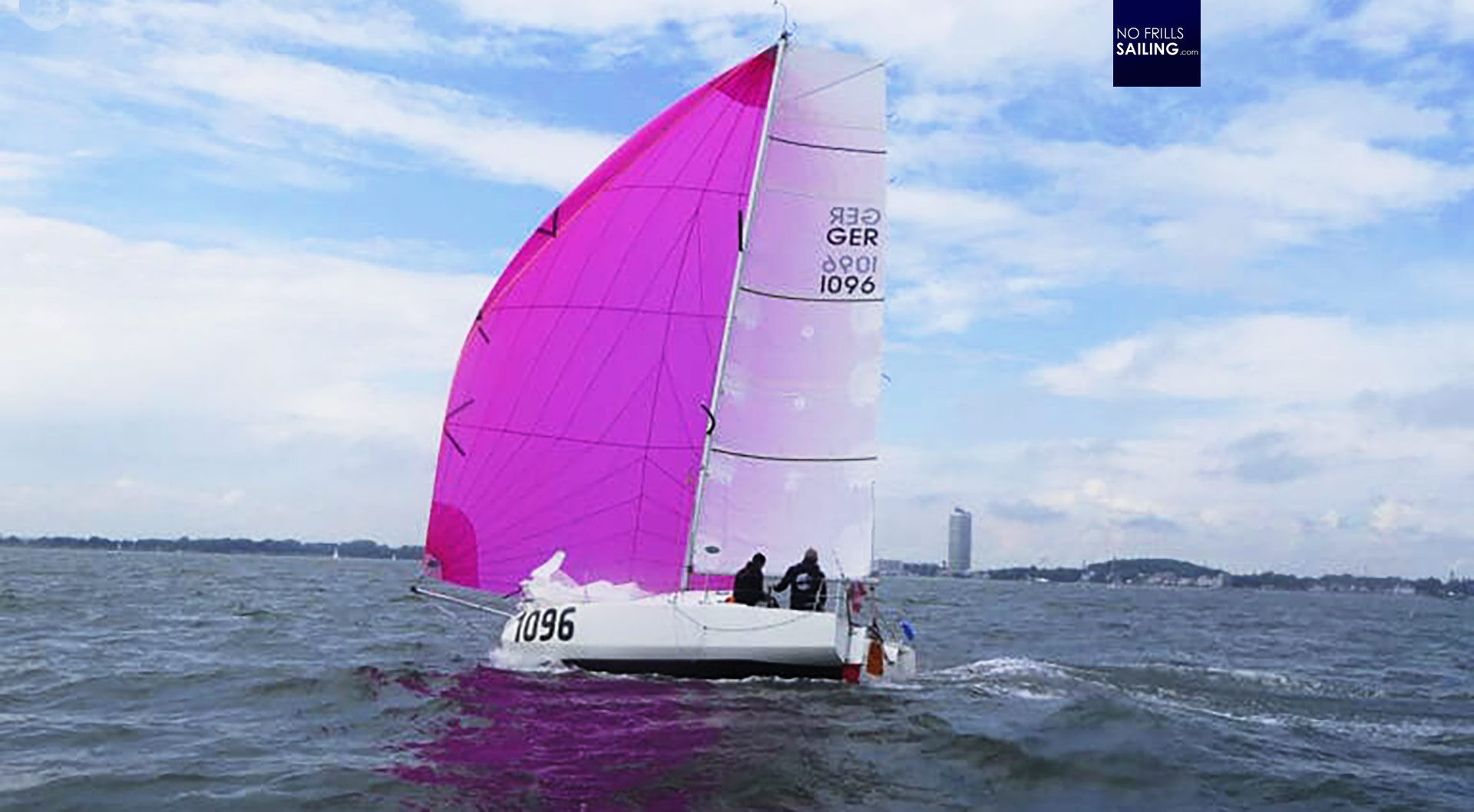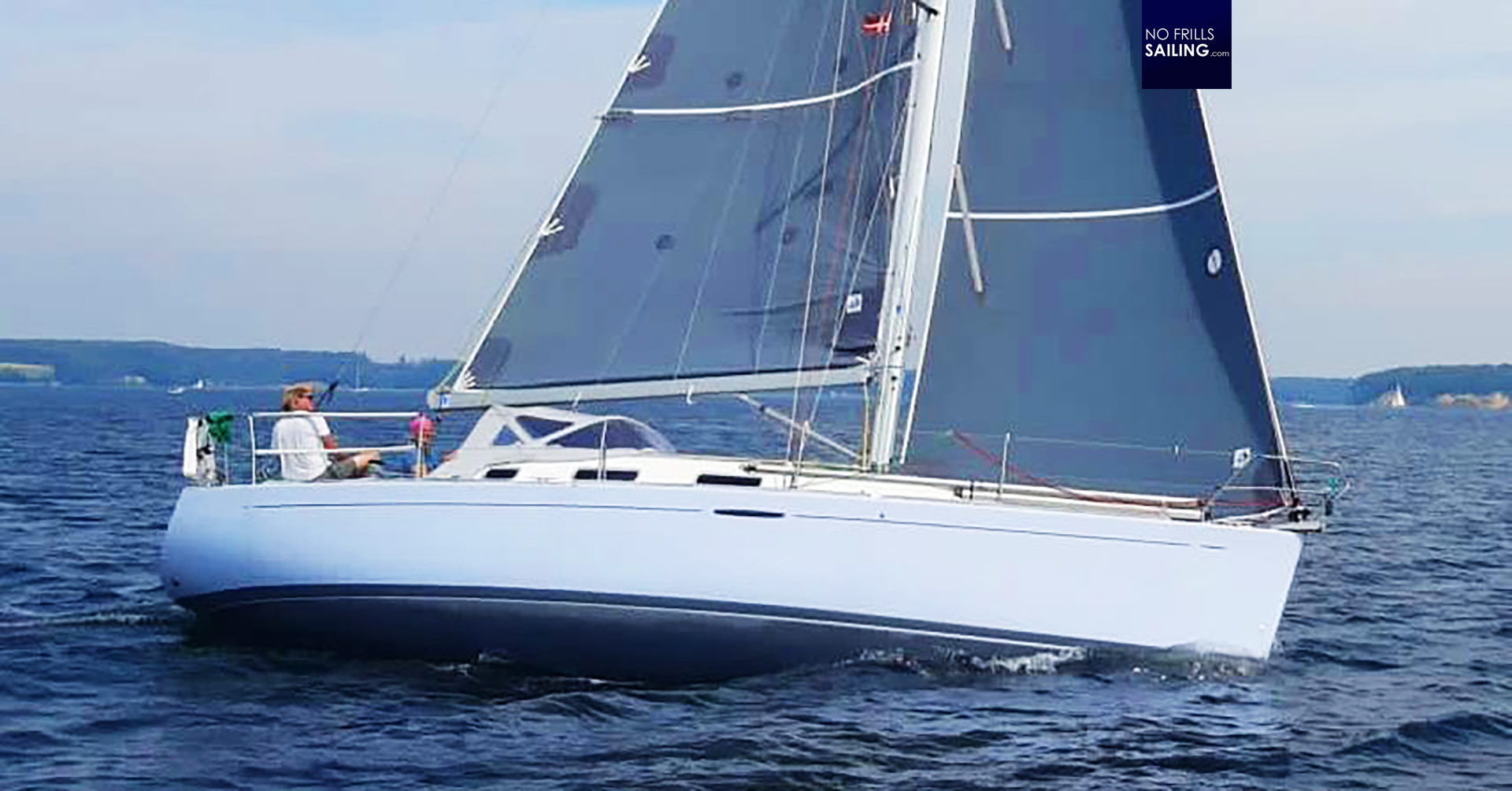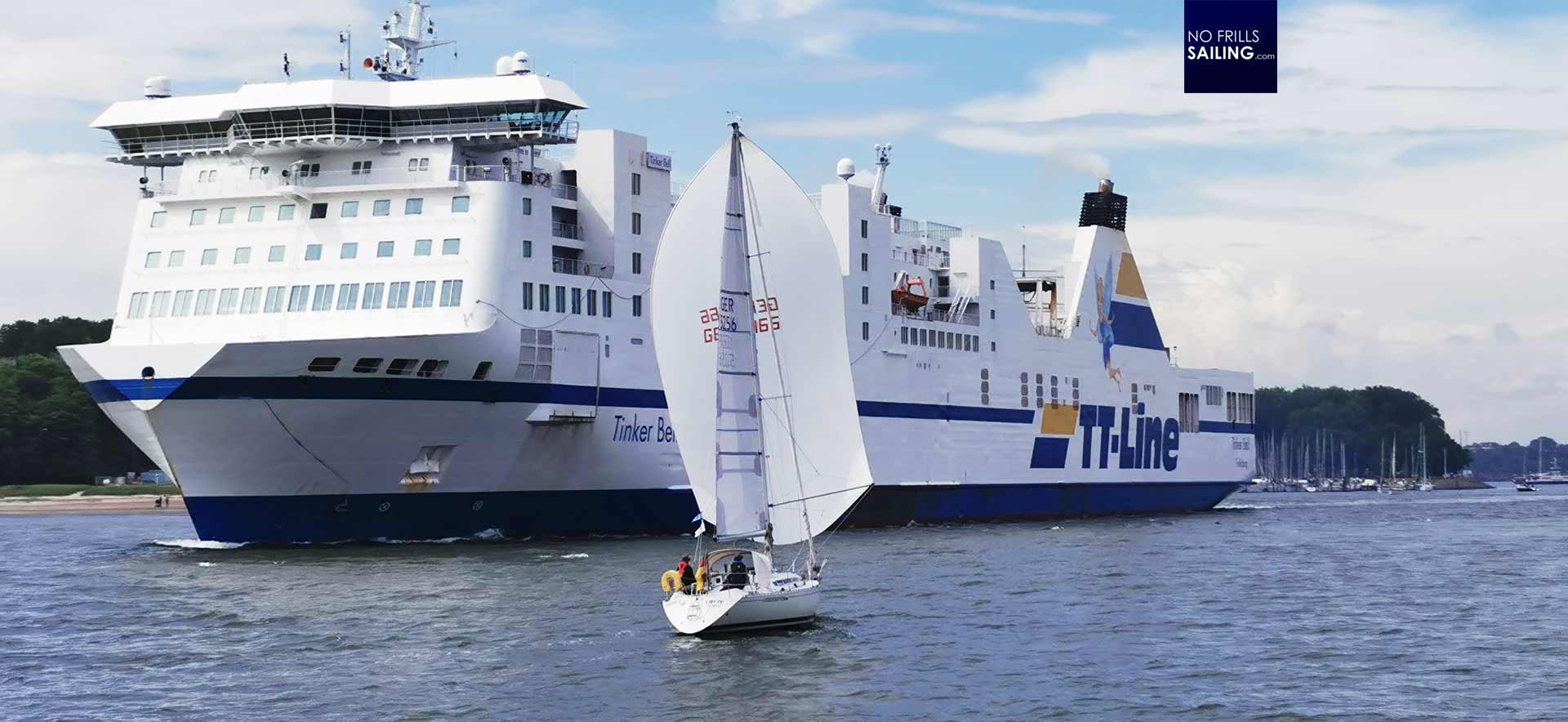The last weekend has been a special one, not just because I was able to sail on the medieval Cog ship at last and had a wonderful forenoon with my kids, but also because one of the more well-known sailboat races in the Western Baltic took place for the third time: The “Brassfahrt”. That´s a 100 nautical miles regatta organized by the venerable Luebeck Yacht Club. A simple triangle course “on the doorstep”, which is our Luebeck Bay area. By itself a very simple concept, nevertheless, but behold – what might seem like a no-brainer on paper is a real challenge. Those races seem to experience a boom – single and double handed races are rocking the Baltic Sea and I am sure your sailing area as well.

Even I personally thought about participating last year (with GEKKO) – and I am all but not a dedicated sailboat racer myself, apart from a few fully-crewed VIP-regattas. So, what is so attractive in solo and double handed amateur racing and why do – at least for the European part – those events seem to experience a thorough boom? Be it Vegvisir Race, the Silverrudder or Baltic 500 – all these events are fully booked in mere hours, people seem to seek the extreme. I´ve talked with two Brassfahrt-participants, who themselves couldn´t be more different, to dive a bit deeper into this topic.
“Single and double handed racing is so much easier in many respects.”
Heiko Zimmermann is a prime example of a participant. Let´s call them the “new generation” of racers. He is a mid-aged man (in fact, the organizer of past Hanseboot boat show) and current ancora Yachtfestival owning a First 36.7 performance yacht. Many of the almost 100 participants of the Brassfahrt are like him: Pretty average Joes, ordinary sailors with their private boats and yachts. Many of them upgraded with performance sails and in generally good condition, what´s their motivation to embark on the 15 to 20 hours long race like Brassfahrt? And where is the difference between a single/double handed race and a race with a full crew?

Heiko does not have to think very long about his answer: He is a “veteran” single/double handed racer if you will. With no less than seven Silverrudder-races and all three Brassfahrt events, he pretty much knows what he is talking about. “For me, a the true question is not what may be the difference between fully crewed and single/double handed racing. The real distinction is between single handed and double handed in indeed.” As with a fully crewed racing event you will have six, seven and even more hands on deck, he says, that´s basically the same in double handed events: Double is a small crew, so the process of assigning tasks, talking to guys, caring for group-effects is basically the same. It´s easier to race too, he says: “Because in single handed racing, of course, all of the work is done by you and you alone. That is the real challenge.”

Hendrik agrees, but adds another angle: “I like double handed the most, to be honest. I use to sail with very good friends of mine, people I know very intimately and well. That makes it so much easier. But also more exciting: In a full crew you will have people with their specialties. Like a main sheeter, a dedicated trimmer, a tactician and such. With just two people, everybody needs to basically know and do everything.” Hendrik also mentions the fact that emotionally it´s much more relaxing to sail alone or double handed. He says, in a full crew you almost always have one or two strange people who may crash the team spirit. Misfits and even cranks can (and often have) destroy the cohesion of a crew and thus render the whole experience becoming an emotional stress. “Double handed racing is in many way so much more relaxed”, he smiles. But: The by way hardest thing – and as such the biggest difference – is finding a crew in the first place: “It has become so tricky to find people to for a crew for a race these times. In this, participating in single and double handed events is much easier from an organizational point of view.
“You can grow as a skipper. Very fast.”
Hendrik Decker, my other interview partner, is a well-known skipper to NO FRILLS SAILING.com-readers. He owns and races a Vector 3 Class Mini 6.50 boat. Being a young, ambitious and skilled skipper, spending most of his time (and money) on his boat, equipment and … races, Hendrik embodies the blueprint of this new generation of sportive skippers: Ambitious, self-paid without any sponsors stirring up the once elite-driven sport. A fresh wind, if you will.

At the second day of the Brassfahrt race I I went to the Travemuende breakwater, tracking Hendrik and his PLAYGIRL 2 via cell phone, to welcome him and his mate to the finish line: Second in his class, he´s done a great job! I ask him what the differences are between, strategically, between a single/double handed race like Brassfahrt and the big fully crewed races. “For me any race is the same, strategically, you know. You have to prepare the boat, check the course, the weather and do all the things, like go shopping and such.”, he says. “In preparation for this Brassfahrt, my mate and I didn´t had to talk too much strategically. We now each other very well, the course is easy – mostly, the trickiest thing is sleep deprivation. Or let´s call it, sleep management. I find that this is for me the most intricate detail of racing double handed – much more or course when sailing alone.”

This is what Heiko tells me as well. He just arrived from the Brassfahrt course, a bit disappointed as he is listed 9th place in his category. During the night, as wind died down, his boat got pushed on land too much by a small but relentless current. When there were only left a few centimeters below keel, he had to start the engine and get away to avoid grounding. Nevertheless, he tells me, that strategically single/double handed racing laves much more work that otherwise is splitted amongst a crew on your own shoulders: “I´ve raced with my nephew this time, so the hardest part of finding a crew wasn´t an issue.”, he smiles. “But of course – a single and double handed sailing race poses a major challenge for any skipper!”

„Those 24-hours-races, which most of the booming regattas like Silverrudder and Brassfahrt are, for me personally qualifies as long-haul-event. I mean, the efforts you´d have to make to tackle a 24 to 30 hours racing event are basically the same. I always found that the problem of having enough power in your batteries is the major thing on such a race. Especially when you do it in a small boat.” For his First 36.7 that´s not a problem anymore, but remembering his early races in a small First 27.7, he recalls many incidents that brought him to the edge: “My second Silverrudder, suddenly, my navigation device died out as my battery was empty. In the middle of a dark night. I had to navigate with my cell phone, which was a nasty thing!” I remember calculating my Atlantic Loop-project with exactly the same boat and encountered the very same problem: Energy and stowage. “I thought that eating and the whole food thing would be an issue, which in reality it is not. Drinking regularly, having a hot tea and enough water at hand is a major thing though, because you work a lot physically hence you need to rehydrate regularly.” He says that a thorough seaman will check weather, currents and all aspects of the route beforehand: “That´s a matter of course. If you sail single, double or fully crewed, you need to be a proper sailor.”
„Everybody will encounter personal limits. And surmount them.“
As Hendrik and Max on PLAYGIRL 2 glide through Travemuende breakwater, we yell and wave. Majestically and calm in the last puff of the day, the boat slowly sails under Gennaker into the harbor. I know Hendrik pretty good, he is always smiling, I´ve never seen him grumpy or miserable. But I can see – even at that distance – that the race they are about to finish has taken its toll. Later he tells me: “The biggest challenge for me is indeed the sleep management. More so in such a crowded sailing area as the Baltic Sea. In this, double handed racing is much better because if you can trust your mate blindfold, you may find at least some sleep. Or let´s call it more some resting time. For me, this is the biggest task. Sailing alone on a small boat like PLAYGIRL is just as fine: She is small, easy to handle and control. I think that´s the advantage of having a small boat. But again, being constantly tired is my biggest hurdle to overcome.”

Heiko how ever has a different view. For him, sailing alone is the biggest thing. “I did it for the first time in 2014. Back in the day I had no clue what single handed racing really means. I was very blue-eyed at the start line of the famous Silverrudder race. Very naïve.” In hindsight, he says, it was about pushing one´s boundaries. Checking the threshold, stepping over your own limits. “When sailing single handed, everything – everything! – depends on you and you alone! That´s a huge thing when it comes to the pressure of racing. I mean, 140 nautical miles around Fyn, which is the Silverrudder, is a huge adventure. Every sail change, every maneuver, every tactical decision … all is up on you.” And that is, for Heiko, the difference to double handed racing, as he explains: “In double handed and crewed racing, your focus shifts: Suddenly, your opponents become important. Because you can now concentrate on the outside world, tactics, the other boats. Your opponent is much more present whilst sailing alone, maybe you are your biggest opponent …”

Both skippers agree on that point: Sharing the racing experience with another crew mate makes things easier and offers more fun. The “racing” becomes more important. “We talk with each other about our tactics, for example, when starting. It´s much more communicative and thus fun. Do we take a risk? Do we start something? It´s all much more fun because you share your experience – as well as the work and the burden.”
„I always learn. I always improve as a sailor.“
When asked what the main learnings for him have been when racing his boat, he thinks about it for a minute. “Well, I always learn when I sail, basically. In racing, I´d say it is maybe a bit more intense. The main things I get taught by regatta racing are myself and the boat. You learn a lot about your personality, your deeply rooted character: Fear, joy, hope … single handed racing is a true journey to yourself.” That´s different in double and crewed racing. “It´s more about techniques and the boat. For example, switching from my Seascape 27 to this bigger First 36.7 was a huge step. A much bigger boat with her own properties, it feels much safer, behaves differently.” In the end, Heiko says, for most people, racing – no matter if double or single handed – is like climbing the Everest: “A huge task. Tackling the unknown. Go beyond your limits. I don´t know if I had done it in the first place if I´d known what it was all about. So – don´t overthink too much! Just enlist, go out and do it! It is really worth it – a great experience!”

To grow as a sailor is also Hendrik´s résumé when asked about the biggest learnings: “For me every race teaches me to become a bit better in handling my boat. Changing sails, tackling maneuvers, precise steering. From this standpoint I constantly improve my skills as a skipper and my seamanship. Of course, every mile outside being sailed improves you as a sailor, but maybe a race compresses this, like a really intensive crash course.”
Are you part of the single/double handed regatta-boom?
While we talk, both are fumbling around to ready their boats right after arrival. Hendrik´s girlfriend stands next to me on the pontoon, eager to welcome her sweetheart. Heiko on his 36.7 has so much to do right after the race – so I let them, wishing them a great Sunday afternoon with some rest. Both wave goodbye as I leave – full of joy, Adrenaline and the pride having tackled this race and having made it back safely in one piece. And isn´t that the very one thing this is all about? Going out, take on the challenge and make it back? I smile because I kind of know this feeling from back in the day when I used to race my Carbon bike in all over Europe and run Marathons.

Single and double handed races are booming – and right so! They are easy to set up, easy to take part in. A “plug & play”-scene if you will. You just need a boat and … yourself. Maybe a good friend. The adventure can start. An exciting weekend in the red zone … for everyone. All are heroes, all are happy. This year´s third edition of “Brassfahrt”, as the organizers tell me, held a new record of participants. Events like the “Silverrudder” are sold out in a matter of hours – something we only know from Rolling Stones or Taylor Swift concert tickets. Who knows, maybe, when ALPHA finally floats, one of these races is something I would do too?
Thanks Heiko Zimmermann and Hendrik Decker for these cool insights – and sorry for bothering you with my questions right after docking.
Some pictures with kind permission under © Copyright by Magdalena Hufnagel and Hinrich Klatt
You may also like to read these related articles:
The perfect start – regatta knowledge by Martin Menzner
Tackling my first sailboat race
